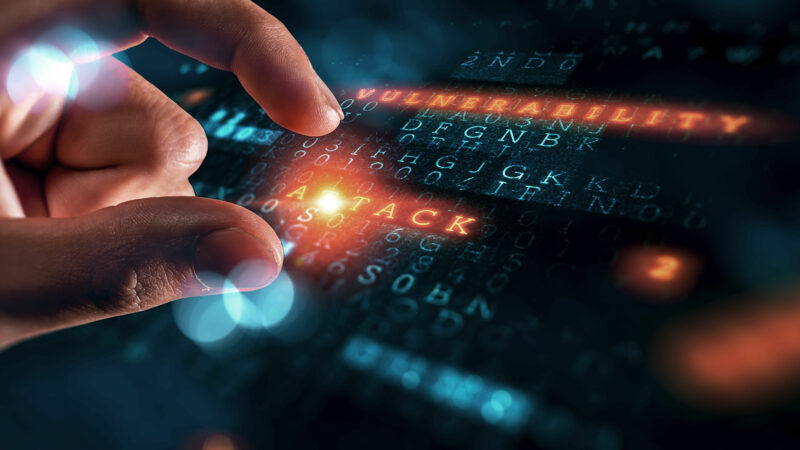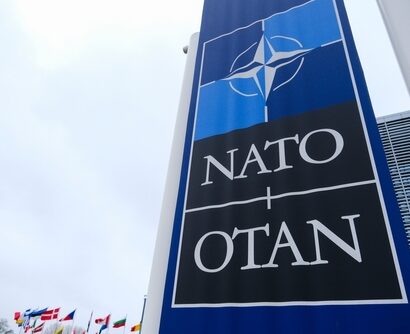Abstract: In today’s world, the challenge for military leaders is not the lack of data or information, but the management of a large amount of data and information. Due to the diversity and complexity, this quantity of data or information often cannot be evaluated by the commander and his staff with the required quality and within the time available for decision-making. The solution is not to rely more on current information and communication technology, but to seek a new and holistic approach. This approach includes a dedicated organisational strategy that is centered around a data-driven corporate culture, a comprehensive information and knowledge management system, and awareness of the chances and challenges with respect to the implementation of (semi)-automated data analysis and decision-making.
Problem statement: What is data-driven decision-making, and what is necessary to consider for deployment in the military environment?
Bottom-line-up-front: Due to the special challenges in the military environment, it is necessary to implement capabilities and processes at various levels and in different areas. In addition to the strategic military command level, these levels include the areas of training and research and development. Only holistic and forward-looking planning can lead to success with respect to the existing complexity in the military domain.
So what?: The introduction of data-driven decision-making in the military requires a holistic strategy to synchronize objectives and resources. This requires ensuring a basic understanding of data science for military leaders and training for military-technical leaders to establish an analysis-based corporate culture. Additionally, implementing an R&D programme is necessary to create the foundations for further deployment.

Source: shutterstock.com/Sergey Nivens
Knowledge is Power
The famous quotation “knowledge is power”, attributed to the English philosopher Francis Bacon, is most relevant when knowledge is the basis for critical decisions, for example, in the context of a military operation. The ever-increasing degree of digitalisation is not restricted to the military, and the amount of data available to military leaders for decision-making is constantly growing. Data is becoming increasingly versatile, especially in terms of sources, formats, and potential informative value. Often, terms such as “big data analysis” or technologies, such as artificial intelligence, are used to make partially or fully automated decisions based on data.
Machine Learning, Deep Learning, and Artificial Intelligence
The term “data-driven decision-making” (3DM) refers to data analysis and preparation for better and faster decision-making. Data becomes information, and having this information available at the right time and in the right quality, is vital for decision-making. This is the only way to combine gut feeling, opinion, and experience with numbers, data, and facts.
Therefore, the process always comprises the following steps:
1. Collect and analyse data;
2. Generate and group information;
3. Analyse trends;
4. Make predictions; and
5. Make decisions.[1]
The handling and evaluation of enormous amounts of data, that is, “big data analysis”, forms the basis for functioning data-based decision-making. Examining vast amounts of data from various sources is essential in this context. The conversion of raw data into suitable formats and the recognition of faulty data play a key role in answering specific questions asked, for example, within the framework of preparing a situation report.[2]
The handling and evaluation of enormous amounts of data, that is, “big data analysis”, forms the basis for functioning data-based decision-making. Examining vast amounts of data from various sources is essential in this context.
The use of machine learning, deep learning, and artificial intelligence methods is essential to handle big data. In machine learning, a programmer intervenes in the learning process through feedback loops and provides the algorithm with the “right answers”. In deep learning, the algorithms independently determine right or wrong decisions.[3]
![Figure 1: Differences between Machine Learning and Deep Learning[4]](https://tdhj.org/media/0d3ede_ffa31737c7e7479e8f1f7f38e0bc785c~mv2.jpg)
Figure 1: Differences between Machine Learning and Deep Learning[4]
In big data processing, the areas of application, as shown in Figure 1, lie primarily in the complexity, handling of different data structures, sizes of the data, and performance of the available hardware. Another factor that enormously influences performance is the availability of specialised personnel to answer the questions in reliable queries. Accordingly, a clear strategy for collection and processing is necessary before using large amounts of data. Staff and resources cannot be deployed efficiently without such a targeted strategy.
Examples from Different Fields
Formula One racing cars, among others, can be used as reference examples for the most diverse fields of application and possible uses of 3DM. In a racing car, information about the vehicle’s technical condition is collected, transmitted, and evaluated by sensors in various components. This generated information is displayed in a digital twin of the racing car. It provides the management team with the basis for important decisions such as race tactics, instructions to the driver regarding the optimisation of the vehicle’s performance, often-decisive pit strategies, and the timely replacement of components. After a race, the impact of the race on the technical components can be evaluated, and thus, measures for optimisation can be initiated. Additionally, various data is continuously collected from the driver. These include body temperature, heart rate, and reaction speed, among others. This makes it possible to detect signs of dehydration or cognitive fatigue at a suitable time. Subsequently, the driver can be given specific training in physical and mental resilience based on this data.
Currently, 3DM is being used successfully in the economy. For example, in the manufacturing industry, sensors are attached to essential components of machines to apply predictive maintenance and, thus, plan and conduct maintenance work in an optimal timeframe to prevent breakdowns and save maintenance costs simultaneously. Reports show that such systems reduce downtime and increase machines’ service life.[5] Another application is in logistics or fleet management, in which the supply chain is optimized, and resources are used more effectively and efficiently.[6]
Currently, 3DM is being used successfully in the economy. For example, in the manufacturing industry, sensors are attached to essential components of machines to apply predictive maintenance and, thus, plan and conduct maintenance work in an optimal timeframe to prevent breakdowns and save maintenance costs simultaneously.
Prerequisites for Using 3DM
For effective use, an appropriate analysis-based corporate culture is required. Without this, the introduction and adoption of this form of decision-making are made more difficult and run the risk of achieving detrimental effects due to a lack of acceptance. Various experiences, especially from the financial sector, show that it is crucial to actively involve managers in the transformation process.[7] Employees play a key role in this connection as well. Employee compliance in the various work processes is the basis for functioning data-based decision-making. However, in this context, it is essential that this only led to a high-quality implementation with a corresponding approach from top-level management.[8]
Another important prerequisite is to implement a process, information, and knowledge management with clear tasks and procedures to ensure an orderly and demand-oriented distribution and processing of information. High-quality knowledge management is essential to capture, process, and distribute existing knowledge.[9]
One of the first measures when using 3DM is the identification of specific questions that must be answered using data to support the decision-making process. No strategy for using sensors for data collection can be created without these questions.
Experts in big data analysis, machine learning, deep learning, and the use of artificial intelligence must be appointed. The challenge is that these experts must additionally have a sound knowledge of the “peculiarities” of the company and the area of application of 3DM in the specific field of integration.
Essential for the implementation of 3DM is the integration of a department that collects all data and makes it available in an orderly manner according to different requirements. This concept, also called “single source of truth” (SSOT), is vital to determine the essential data from various sources in a way that is appropriate for the target group, avoid duplicates, and identify inconsistencies or errors in the data.[10] Effective and active fraud management to prevent and detect attempts at manipulation and fraud is essential to ensure the integrity of data and information. This system can only achieve its full effect in conjunction with the process and information management outlined previously.[11]
This concept, also called “single source of truth,” is vital to determine the essential data from various sources in a way that is appropriate for the target group, avoid duplicates, and identify inconsistencies or errors in the data.
Appropriate risk management is indispensable to record and assess risks in the individual process steps systematically. Not all risks can, must, or should be avoided. However, they must be known as far as possible to facilitate decision-making for dealing with these risks. For example, in 3DM, these risks can be related to missing, faulty, delayed, or incorrectly coded data.[12]
An essential prerequisite is a high level of resilience through effective business continuity management (BCM) in the event of data or information failure. To guarantee this resilience, there must be a framework of strategies and processes for the system’s highest possible security, availability, and performance.[13] To ensure effective use of the collected data, it is important to integrate a high number of data-collecting systems and provide a high-quality networking structure (high bandwidth). This is essential for a timely, qualitative, and accurate evaluation of the data.[14] To ensure the necessary analysis of the “big data”, the use of artificial intelligence and other methods for automated processing and evaluation of data is necessary.[15]
3DM in a Military Context
Basing military decisions on quantitative data is not a novel practice. Ratios have always been considered, and supply planned quantitatively. However, the available data sources and volumes are no longer commensurate with the quantitative and qualitative data collected, processed, and evaluated in the 21st century.[16]
Timely and effective decisions are essential for successful military operations. The saying “the best decision too late is worthless” can be seen as emblematic of the dilemma of military decision-making. The available situational picture is often incomplete, and these gaps must be filled by the military leader using the military decision-making process (DMP), personal experience, and determination to make timely decisions. To cover all required disciplines and capabilities, the military commander takes advice from subject matter experts to reduce complexity and make and implement decisions in the required level of detail.
Therefore, data-based decision-making must supplement and condense the existing situation picture, analyse trends using technology (e.g., AI), and create predictions. This provides the military commander and his experts with additional bases for preparing and making decisions, thus reducing the need for “assumptions” and “gut feelings”. Another key factor in combat is to maintain the initiative. Here, trends and forecasts that can be obtained from data can decisively support the military commander to assess his options for action quicker and more comprehensively.
As in the civilian sector, the basis for 3DM in the military is the collection of data through the “network of things”. For example, in the case of equipment that is prepared with biometric sensors, or in the case of equipment and vehicles that automatically transmit their status (i.e., maintenance status, operating resources, ammunition, and position).
In evaluating this data and generating and grouping information, the time factor and the form of the presentation, are of considerable importance. This is especially relevant due to the information needs of the different staff departments. Not every piece of information is time-critical and affects every department equally. However, interdependence can never be completely ruled out.
The challenge for the military staff is to question the collected, evaluated, and presented information using critical thinking, resolve complexities, and evaluate situations with the help of personal training and experience. Thus, certain skills of the military leader, such as empathy and imagination, as well as an important level of social and intercultural competence, are essential for improving the quality of leadership decisions.
The challenge for the military staff is to question the collected, evaluated, and presented information using critical thinking, resolve complexities, and evaluate situations with the help of personal training and experience.
Accordingly, the necessary subjective interpretation of the military leader requires an intensive engagement with topics from the field of data evaluation (data science) for military leaders to generate acceptance and understanding of these topics. However, there is a need for specially trained data analysts who can specifically deal with the technical analysis level and support the military commander and his specialist officers with targeted evaluations.
Areas of Application in the Military Context
The possible applications of 3DM in the military are just as extensive as in the civilian world. However, for the purposes of this article, only a few possible applications are discussed below.
Evaluating image and film material requires a lot of time and expertise. For example, a high degree of automation can be achieved using machine learning, which gives the human evaluator more time for detailed interpretations. The merging and checking of data in different formats and from different sources can be automated, and the quality of the data can be verified through a comparison. This increases the security of further evaluation and use.
In military logistics, implementing predictive maintenance and automating supply requirements of high-quality systems can optimise spare parts and stock provision to minimise downtime.[17] Another application in this area is the permanent assessment of location reports of own forces, as well as the status of vehicles or systems with respect to further deployment possibilities or maintenance and supply needs.
To create a digital twin of the battlefield, in addition to integrating own systems and elements, digital preparation of the terrain is possible within the framework in which current available environmental data, such as weather or water level, is included. This data can be used to automatically create options for action in the battle using artificial intelligence, considering the capabilities of own systems, the terrain, and information about the enemy. A key application area is modern visualisation techniques (i.e., 2D, 3D, AR, and VR) to effectively present the processed information to military leaders.
Challenges in the Military Environment
The military environment makes high demands in the areas of data acquisition, data transmission, and information processing, which are rarely encountered in this form in the civilian environment. The first challenge in the military environment is the integration of sensors in military vehicles and systems. Specifically, there is limited space to install these sensors and supply them with energy in military vehicles. Unused space and energy reserves are in short supply, especially in military vehicles and systems. This is because at the time of conception of these vehicles, not all emerging needs can be planned for, and the fulfilment of the main task of the system and protection of the crew is paramount. Data transmission is not straightforward in a highly mobile network, which must function under operational conditions, as the available means of communication at the tactical level often do not have the necessary bandwidth for physical reasons (e.g., the selected frequency, waveform, and modulation type).
Unused space and energy reserves are in short supply, especially in military vehicles and systems. This is because at the time of conception of these vehicles, not all emerging needs can be planned for, and the fulfilment of the main task of the system and protection of the crew is paramount.
Moreover, intensive use of the electromagnetic spectrum entails other risks, such as the ability to be reconnoitred, and, thus, more easily combated by enemy forces. However, the jamming and spoofing of sensors is a challenge for improving the sensors and implementing a (software-defined) plausibility check against these risks. Similarly, the necessary classification levels must be planned, and the necessary systems for evaluating the data and using the information, such as a command information system, must be implemented. The next challenge is that there are hardly any standard industrial solutions to integrate sensors in military vehicles and systems. Further, the necessary software for evaluating and processing the collected data requires a high degree of flexibility for this dynamic application area due to the specific military requirements.[18]
Opportunities and Risks Associated with Using 3DM
The use of 3DM results in comprehensive changes for military leaders. Subsequently, these changes lead to advantages and disadvantages for advancing digitalisation in the military.
![Figure 2: Impact of using 3DM in a military environment[19]](https://tdhj.org/media/0d3ede_b463810e144940ae97f5ab475486d5d0~mv2.png)
Figure 2: Impact of using 3DM in a military environment[19]
One of the greatest opportunities and objectives regarding using 3DM in the military is to achieve information superiority to gain effect superiority. This enables a more efficient achievement of objectives.
To achieve these goals, some changes are necessary. One major change is the faster and more accurate collection of sensor data to generate the common situation picture of the transmission of data and information to neighbours or allies and the more efficient use of autonomous systems on the battlefield.[20]
Opportunities for Using 3DM in the Military Environment
As in the civilian sector, the structured use of data for decision-making provides numerous opportunities for the military leader. In the military environment, these include the automated creation and presentation of key insights through the connections between independent pieces of information, which, when combined, have high relevance for decision-making. Based on this consolidation of the information, the opportunity for faster decisions arises from the recourse to a prepared situation picture.
Additionally, the quality of the decisions increases due to the recourse of the possible integration of partially-automated prepared decision proposals. These partial automations of the decision-making process, which prevent military leaders from creative planning steps through trivial, manual activities, can increase the efficiency of the significant contributions of the staff in the military DMP. Accordingly, a corrective function can be established by automated verification of feasibility by pre-calculating consumption values.
Another positive effect is that minimising the susceptibility to errors by automating monotonous activities, such as the processing of tables, frees up resources for other tasks (e.g., staff time for other planning activities). Future decisions are improved through the documentation and evaluation of decisions and their effects. The available uniform situation picture facilitates a holistic view of the current situation for all areas of operational command.
Hazards/Risks of Using 3DM in the Military Environment
The most diverse sources of risks arise while using 3DM in the military. One hazard while using 3DM is the possible disengagement of the military leader from important decisions because of automated decision suggestions. There must be a military decision-maker in the loop to make decisions consciously, especially if the decision is regarding using deadly force.
Further, human beings’ limited objectivity leads to a targeted search, or preference, for information that supports preconceived opinions. This “cherry-picking” pulls individual pieces of information out of context and prevents an objective assessment of the overall situation. Subsequently, this leads to distortions and misunderstandings, which develop into errors of judgement and wrong decisions. Moreover, the risk of forming a preconceived opinion or assessment result after the first findings (the first situation picture) is that information that comes in later will only be considered to a limited extent or not at all.
Human beings’ limited objectivity leads to a targeted search, or preference, for information that supports preconceived opinions. This “cherry-picking” pulls individual pieces of information out of context and prevents an objective assessment of the overall situation.
Another hazard is due to the limited ability of humans to comprehend complicated or complex facts. This gets even more difficult by an increase in the amount of information and its sources and categories. It leads to the risk of decision-makers having a high dependence on data to make decisions. The ability to anticipate events or make assumptions can be reduced due to a lack of practice and experience.
Another risk is the reduction of “critical questioning” of subjectively valid information and the reduction of creativity by relying on suggestions or excluded possibilities. The constantly condensed situation picture, which is available through the compilation of sensor results, can lead to a “decision delay” as new changes are constantly awaited. Additionally, the fact that there is the possibility of realistic forecasts and trends can lead to inhibition in taking decisions despite the high tendency to minimise risks. Even the lack of intuition or the “divine spark” that comes from recognising opportunities in combat through deliberate deviation from the norm cannot occur using 3DM. In many historic battles, the commander’s intuition or the often-described “divine spark” in which he consciously deviated from the norm was held responsible for the successful outcome of the battle.
On the technical side of view, there are various security risks due to the loss, manipulation, or falsification of data if it is leaked to “unauthorised parties” through security breaches or if it is not processed properly by the staff (compliance). Furthermore, the necessary time and costs for implementation, as well as the time for training, must be considered.
Derived Measures at Various Levels
In this section, derived measures at various levels are presented. These are the military strategic level to ensure an integrated approach, training level to sensitise future military leaders in a timely manner, and finally, the research and development level to create the prerequisites for deployment in the armed forces.
Necessary Measures on the Military Strategic Level
The Austrian combined military forces must devise and implement a strategy for dealing with digitalisation, big data, the use of artificial intelligence, and 3DM. The design of this strategy must primarily address the needs of military decision-makers at the tactical (main effort) and operational levels. These needs must be analysed in detail and matched with the existing and anticipated technologies. This is because, in this context, “the best strategy too late is useless” as well. In addition to implementing a strategy, partnerships with strategic partners, research institutions, and technology companies to exchange experiences and research specific issues play a significant role.
The Austrian combined military forces must devise and implement a strategy for dealing with digitalisation, big data, the use of artificial intelligence, and 3DM. The design of this strategy must primarily address the needs of military decision-makers at the tactical (main effort) and operational levels.
The realisation that technological developments around the analysis and use of big data are subject to shorter development cycles, especially in the industry than in the military sector, reinforces the need to break away from classic procurement programmes and use research as an innovation element for the timely identification of trends as required by the military.
The timely involvement of companies and organisations around security research helps form an essential cornerstone for further development. In addition to purely military needs, numerous application fields deal with managing major events, such as disaster relief after natural catastrophes. The promotion of training and further education of experts in the professional military field for 3DM must be supported to ensure internal assessment and monitoring of the necessary digitisation projects. Additionally, military experts must be recruited to benefit from their professional expertise from the civilian sector and experience in the military.
Necessary Measures at the Level of Military Leadership Training
To meet the requirements of using 3DM for military leaders, some measures in the field of training are necessary. Military decision-makers must be taught the basics in the field of data science to be able to recognise the nature, urgency, and significance of giving analysts concrete instructions for the creation of analyses, trends, and predictions. Additionally, they must have a high level of awareness about the different dimensions in decision-making, especially awareness of how information is to be viewed through personal experience, as well as cultural frameworks. Military leaders must hone and maintain the ability to make decisions under time pressure, and in unclear situations, and adapt these decisions to a condensed situation picture within the framework of a continuous situation assessment.
Military leaders must hone and maintain the ability to make decisions under time pressure, and in unclear situations, and adapt these decisions to a condensed situation picture within the framework of a continuous situation assessment.
Training military-technical leaders to ensure that experts in the field of data science — with military socialisation as an interface — function between military commanders and technical analysts or other experts is becoming increasingly crucial for the use of 3DM. There is a need for military specialists who can perform these tasks under all environmental conditions to plan, operate, and monitor the overall technical systems under operational conditions.
The new bachelor’s degree programme in Military Information and Communication Technology Leadership, implemented at the Theresan Military Academy in the winter semester of 2022, precisely closes these gaps in training military-technical leaders and the technical inputs around general military leadership.
Necessary measures in the Field of Military Research and Development
The military must conduct a multi-phase research and development programme to provide concrete and tailor-made derivations for the requirements in various (prioritised) use cases in cooperation with the technical and system departments. The Theresan Military Academy has planned such a programme. This programme will be implemented in 2023. The following steps will be taken within the framework of the research:
1. Identify concrete military use cases for the deployment of 3DM (decision level);
2. Analyse the required information for military decision-makers in the context of these use cases (information level);
3. Define the required data and the possibilities of data acquisition (data/sensor level);
4. Development of a “demonstration system” from data collection, transmission, and evaluation, to visualisation of the results for the military decision-maker.
In addition to the ongoing involvement of military experts and stakeholders, the integration of civilian institutions and companies and cooperation with strategic partners is essential within this programme’s framework to achieve the goals more time- and cost-efficiently.
Conclusion
Implementing 3DM in the military environment enables more efficient use of resources and can lead to quicker and more accurate decisions. The military staff can spend more time on creative aspects of the military decision-making process owing to the partial automation of the assessment process.
The limitations of this paper are the depth of coverage and the analysis of common sources. This paper aimed to provide a general overview of this extensive subject area; therefore, technical details were not included. Subsequently, the Theresan Military Academy will start a research project to describe concrete use cases of 3DM in the Austrian military to develop and test concrete solution strategies for them.
Alexander Treiblmaier; Research interest: Impact of technological developments on leadership in the military environment. The views contained in this article are the author’s alone and do not represent the views of the Austrian MOD.
[1] Carl Anderson, Creating a Data-Driven-Organization: Practical Advice from the Trenches (Beijing: O´Reilly, 2015), 1-11.
[2] Arshdeep Bahga, Madisetti Vijay, Big Data Science & Analytics: A Hands-on Approach (online: Hands On Approach Handbook, 2016), 26.
[3] Shai Shalev-Shwarzt, Ben-David, Shai, Understanding Machine Learning: From Theory to Algorithms (Cambridge: Cambridge University Press, 2014), 4-6.
[4] Source: Adjustments by the author; „Deep Learning vs. Machine Learning: Wo liegt der Unterschied?,“ Freshworks, last modified June 29, 2021, https://www.freshworks.com/de/deep-learning-machine-learning-blog/.
[5]“Instandhaltung 4.0: Bessere Planbarkeit und Reduktion von Stillstandzeiten,“ Einkauf und Management, last modified Octobre, 2017, https://einkauf-und-management.de/instandhaltung-4-0-bessere-planbarkeit-und-reduktion-von-stillstandzeiten/.
[6]„Leitfaden für eine datengestützte Entscheidungsfindung in der Industrie 4.0.,“ Magic Software Enterprise Ltd., last modified 2019, https://factoryeye.magicsoftware.com/wp-content/uploads/2020/10/WP_The-Executive-Guide-to-Data-Driven-Decision-Making-in-Industry-4.0_DE.pdf, 3.
[7] Carl Anderson, Creating a Data-Driven-Organization: Practical Advice from the Trenches (Beijing: O´Reilly, 2015), 255-260.
[8] Martin T, Biegelman, Joel T. Bartow, Executive Roadmap to Fraud Prevention and Internal Control: Creating a Culture of Compliance (Hoboken N.J: Wiley & Sons Inc., 2012), 97-98.
[9]Urho Creusen, Birte Gall; Oliver Hackl, Digital Leadership: Führung in Zeiten des digitalen Wandels (Wiesbaden, Heidelberg: Springer Gabler, 2017), 70-71.
[10] „Single Source of Truth: Definition & Umsetzung,“ Talend, last modified 2022, https://www.talend.com/de/resources/single-source-truth/.
[11] Martin T Biegelman, Joel T. Bartow, Executive Roadmap to Fraud Prevention and Internal Control: Creating a Culture of Compliance (Hoboken N.J: Wiley & Sons Inc., 2012), 55.
[12]Urho Creusen, Birte Gall, Oliver Hackl, Digital Leadership: Führung in Zeiten des digitalen Wandels (Wiesbaden, Heidelberg: Springer Gabler, 2017), 137.
[13] Andrew Hiles, The Definitive Handbook of Business Continuity Management (Chister: Wiley, 2009), 27-30.
[14] Gérard Boisboissel, „New Technologies and Decision-Making for the Military,“ Intechopen, (July 2021): 5.
[15] Ibid., 6.
[16] “Benefits and Pitfalls of Data-Based Military Decisionmaking” Scott S. Haraburda, Small Wars Journal, last modified 21 November 2019, https://smallwarsjournal.com/jrnl/art/benefits-and-pitfalls-data-based-military-decisionmaking.
[17] „SUMMARY OF THE 2018 DEPARTMENT OF DEFENSE ARTIFICIAL INTELLIGENCE STRATEGY: Harnessing AI to Advance Our Security and Prosperity,“ U.S. Department of Defense, last modified Februar 2019, https://media.defense.gov/2019/Feb/12/2002088963/-1/-1/1/SUMMARY-OF-DOD-AI-STRATEGY.PDF. 11.
[18] „Leitfaden für eine datengestützte Entscheidungsfindung in der Industrie 4.0.,“ Magic Software Enterprise Ltd., last modified 2019, https://factoryeye.magicsoftware.com/wp-content/uploads/2020/10/WP_The-Executive-Guide-to-Data-Driven-Decision-Making-in-Industry-4.0_DE.pdf, 8.
[19] Source: Author.
[20] Gérard Boisboissel, „New Technologies and Decision-Making for the Military,“ Intechopen, (July 2021): 3-4.






